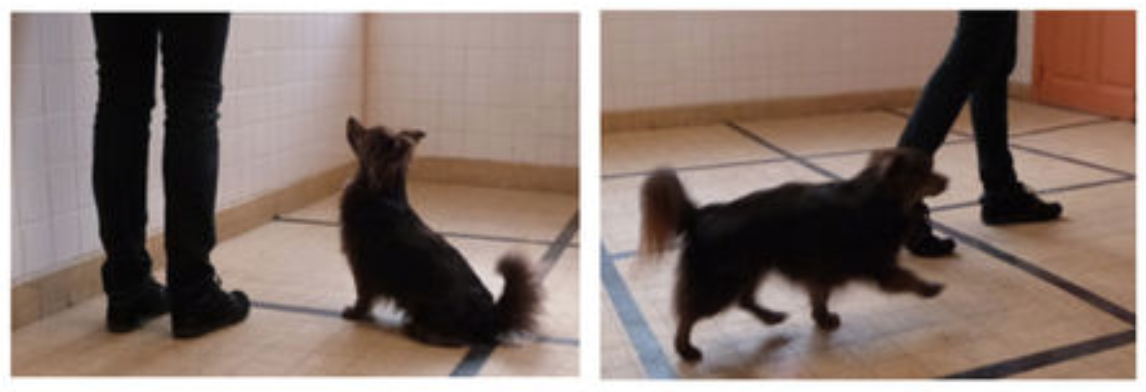Spend enough time with another person, and you begin to pick up their mannerisms. Such behavioral "synchronization" is a mechanism by which we build social cohesion. It operates as a positive feedback loop: the more you know somebody, the more synchronized you will be and vice versa.
Synchronization occurs to be a general phenomenon among all social creatures. People tend to walk in step and sway together in separate rocking chairs. Even dolphins have been observed to breathe in sync.
This raises the question of whether synchronization occurs across species. And what better interspecific relationship to test than that between man and his best friend, the pooch? So a team of researchers did just that, examining behavioral synchronization between 48 dogs and their owners.
The team selected 24 Molossers (a category that includes breeds like bulldogs, mastiffs, and Saint Bernards) and 24 shepherds, along with their owners. Before testing began, the dog was allowed to explore an unfamiliar room in the presence of his owner for 10 minutes. Afterward, the human was instructed to stand in certain locations or to walk around, without communicating with their pet or even looking at it.
 The dogs responded by synchronizing their behavior with their owners. If the owner was standing, the dog stopped moving. If the owner was walking, the dog walked, too. If the owner was looking at the front of the room, so was the dog. Nearly 80% of the time, the dog remained within one meter of its owner. In other words, the dogs exhibited location, activity, and temporal synchrony with their owners, and almost no differences were observed between the two categories of dogs in the study.
The dogs responded by synchronizing their behavior with their owners. If the owner was standing, the dog stopped moving. If the owner was walking, the dog walked, too. If the owner was looking at the front of the room, so was the dog. Nearly 80% of the time, the dog remained within one meter of its owner. In other words, the dogs exhibited location, activity, and temporal synchrony with their owners, and almost no differences were observed between the two categories of dogs in the study.
The authors concluded, "Like two people walking side by side, when a person and a dog walk indoors, their movements are not independent, but synchronized."
That conclusion is likely a bit too broad. Dogs may not behave quite the same way in more familiar settings, such as inside their own home.
Regardless, it's an interesting observation. Why they would be so keen on synchronizing their behavior is not entirely clear. One possibility is that the dogs were stressed from being in an unfamiliar room, so they relied on their owners for support. Another is that dogs are trained, usually on a leash, to follow their owners, so they behaved out of habit. Of course, another plausibility is that dogs simply like us an awful lot, and they want to go wherever we go.
That's the explanation most of us prefer.
Source: Charlotte Duranton, Thierry Bedossa, and Florence Gaunet. "Interspecific behavioural synchronization: dogs exhibit locomotor synchrony with humans." Scientific Reports 7, Article number: 12384. Published: 28-Sept-2017. doi: 10.1038/s41598-017-12577-z




